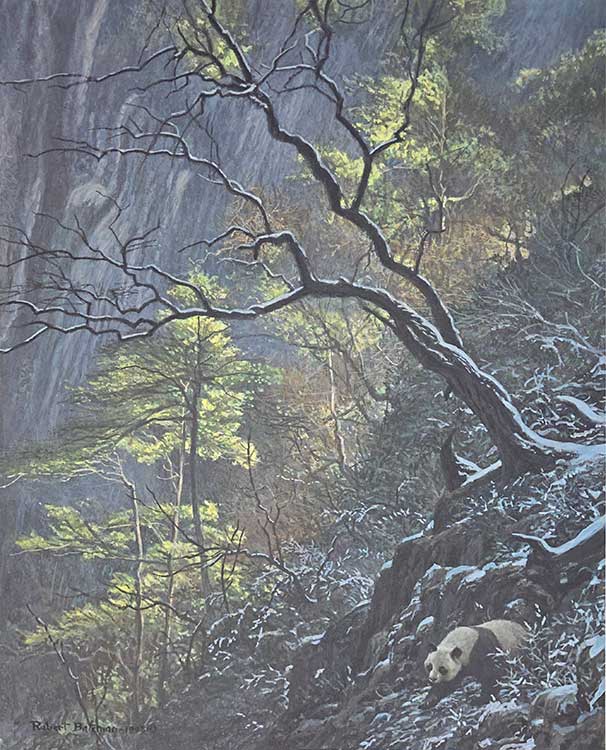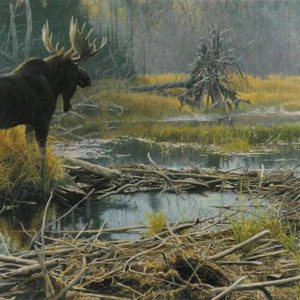Description
Giant Panda in the Wild – 16″ x 12″ – 950 Edition Signed and Numbered Paper Print
2 piece set including the large print above, signed and numbered out of 950 and a gorgeous hand colored Original Lithograph pictured below, which is also signed and numbered out of 950.
“The panda’s habitat, however, made me feel right at home. As we climbed the narrow switchback trail that had begun in neatly terraced fields, we entered
a region of huge old-growth trees covered with snow that had fallen the previous night. (The panda’s depend on these old trees for dens.) Many of the tree species – pine, fir, hemlock, larch and birch – were familiar, as was the cool misty weather. Except for the dense bamboo thickets, I could almost have been walking in an old-growth forest of the Pacific Northwest. But above all, it is the bamboo under-story that makes these mountain habitats the place for pandas.
They feed almost exclusively on this difficult-to-digest and nutrient-poor plant. As descendants of the ancient carnivore ancestor of modern bears, pandas
lack the digestive adaptations that might allow them to use their plant food to the maximum, and so they compensate by eating constantly and digesting
quickly, on average eighteen pounds a day. To conserve energy, they generally sleep whenever they’re not eating, but this still leaves them close to the edge of malnutrition. When a species of bamboo suddenly flowers and dies off – as it may do once in many years – the panda population can drop catastrophically. This is a particular problem now that logging has cleared the lower slopes, where different bamboo species provided an alternate food source.” – Robert Bateman
Giant Panda in the Wild is available
Biography
Robert Bateman has been called the most famous living artist. He continues to paint and tour the world to promote conservation and preservation of nature. We have represented Robert Bateman for decades and are now the sole publisher and distributor of his reproductions. We are so honored to work with him and witness his success. He has made such a massive contribution to the art world and the natural world as an artist and educator of the earth’s most important resources.
Nature as a subject is becoming more and more popular as our environment is in peril. What better subject is there than the beautiful creatures we share this world with? Robert Bateman’s appreciation and understanding of nature are apparent in his paintings. He is able to paint flora and fauna the way your eye would perceive it in real life. It is important that the animal takes full attention. The background becomes muted, and therefore it doesn’t take too much focus away from the subject. His paintings seem effortless and masterful all at once.
Bateman’s eye for composition is unparalleled. Each painting is a composed like a symphony, leading the eye to wander. From the backyards of North America to the sprawling plains of Africa. Robert Bateman captures nature the way it should be enjoyed. Above all he is a champion of wildlife. For this reason he has become a household name for art collectors.


